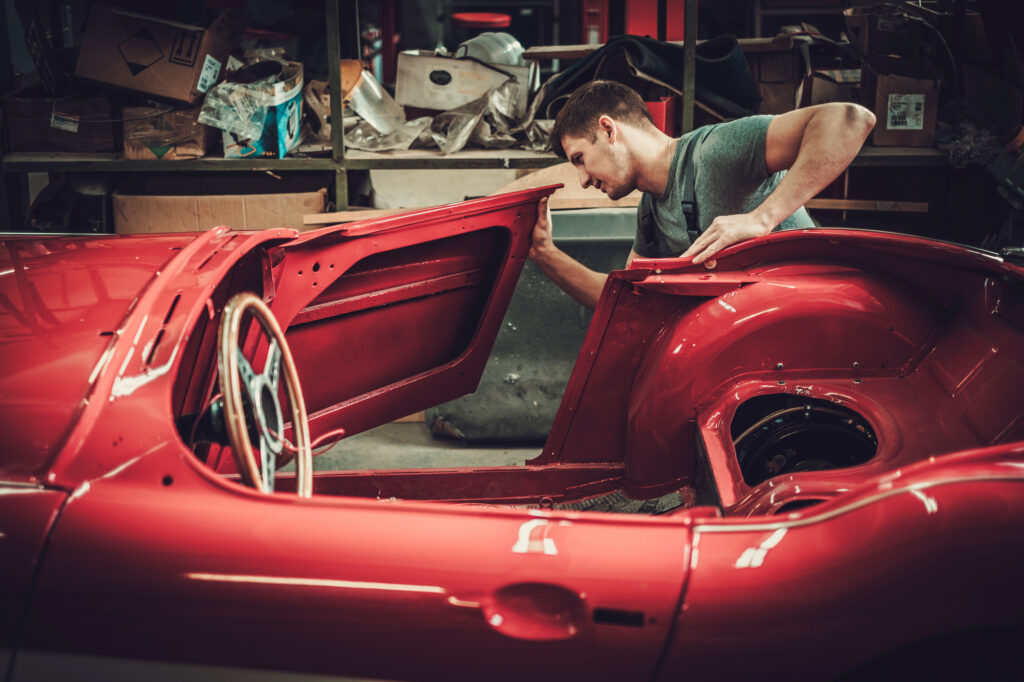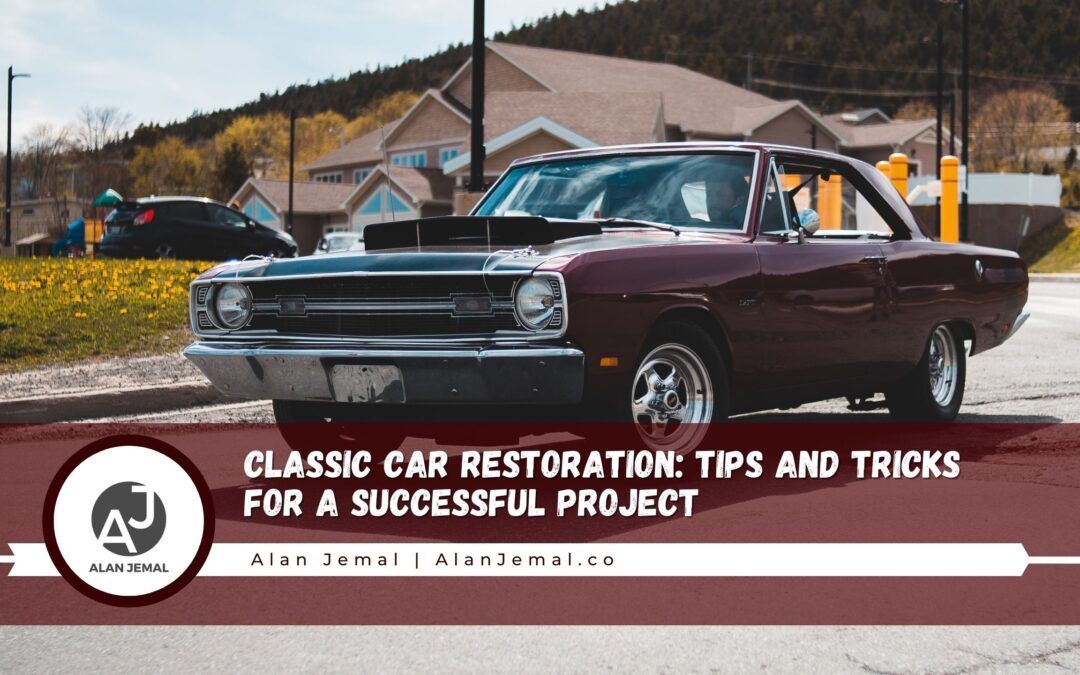Auto restoration project tips for classic cars: Preserving the Past with Precision
Exploring the world of auto restoration projects for classic cars, this introduction sets the stage for a deep dive into the essential tips and techniques needed to revive these automotive treasures. From the importance of maintaining historical value to the meticulous planning required, this overview offers a glimpse into the intricate world of classic car restoration.
As we delve further, we will uncover the key aspects of planning, sourcing parts, restoration techniques, and finishing touches that contribute to the successful revitalization of classic automobiles.
Importance of Auto Restoration Projects for Classic Cars

Auto restoration projects play a crucial role in preserving classic cars for future generations. These projects are not just about fixing old vehicles; they are about maintaining a piece of history and cultural heritage.
Preserving Heritage
Restoring classic cars helps in preserving the heritage and legacy of automotive design and engineering. It allows us to appreciate the craftsmanship and innovation of the past, which might otherwise be lost or forgotten.
Retaining Value
By engaging in auto restoration projects, owners can help retain the value of classic cars. Proper restoration work can significantly increase the resale or auction value of a vintage vehicle, making it a worthwhile investment in the long run.
Planning and Preparation for an Auto Restoration Project
When embarking on an auto restoration project for a classic car, proper planning and preparation are key to success. This involves creating a detailed checklist, setting a budget and timeline, and assessing the extent of restoration needed before diving into the project.
Detailed Checklist for Planning an Auto Restoration Project
Creating a comprehensive checklist is essential to ensure that no aspect of the restoration project is overlooked. Here are some key items to include in your checklist:
- Research the specific make and model of the classic car to understand its history and unique features.
- Inspect the current condition of the car, noting areas that require repair or replacement.
- Compile a list of parts and materials needed for the restoration, including any specialized tools.
- Identify reputable suppliers for parts and materials to ensure quality and authenticity.
- Create a detailed timeline outlining each step of the restoration process, from disassembly to final assembly.
- Allocate a designated workspace with proper lighting, ventilation, and equipment for the restoration work.
Importance of Setting a Budget and Timeline
Setting a budget and timeline for your auto restoration project is crucial to keep the project on track and within your financial constraints. Without a clear budget, costs can quickly escalate, leading to delays or unfinished projects. Similarly, a timeline helps you stay organized and focused on completing each stage of the restoration within a reasonable timeframe.
By establishing a budget and timeline upfront, you can effectively manage resources, prioritize tasks, and track progress throughout the restoration project.
Assessing the Extent of Restoration Needed
Before starting the restoration project, it is essential to assess the extent of work required to bring the classic car back to its former glory. This involves conducting a thorough inspection of the car’s body, engine, interior, and mechanical components to identify areas that need attention.
- Check for rust, corrosion, dents, and other damage on the body of the car.
- Evaluate the condition of the engine, transmission, suspension, and brakes for any signs of wear or malfunction.
- Inspect the interior upholstery, dashboard, and trim for tears, stains, or missing components.
- Assess the electrical system, lights, and gauges to ensure they are functioning properly.
Sourcing Parts and Materials for Classic Car Restoration

When it comes to restoring classic cars, sourcing authentic parts and materials is crucial to maintain the originality and value of the vehicle. Finding the right components can be a challenging task, but with the right approach, you can ensure a successful restoration project.
Best Sources for Authentic Parts
One of the best sources for authentic parts for classic car restoration is specialized vintage car part suppliers. These suppliers often have a wide range of original parts that are specifically designed for classic cars. Additionally, attending classic car shows and swap meets can also be a great way to find authentic parts for your restoration project.
Challenges of Finding Original Parts
One of the main challenges of finding original parts for classic car restoration is the limited availability of certain components. Some parts may be rare or discontinued, making them difficult to find. In such cases, you may need to consider alternatives such as aftermarket parts or custom fabrication.
Tips for Ensuring Quality and Authenticity
- Research and verify the authenticity of the parts before making a purchase. Look for part numbers, manufacturer markings, or other indicators of originality.
- Consult with experts or enthusiasts in the classic car community to get recommendations on reputable suppliers and sources for authentic parts.
- Inspect the parts in person whenever possible to ensure they are in good condition and suitable for your restoration project.
- Consider investing in restoration guides or manuals to help you identify authentic parts and materials for your specific classic car model.
Restoration Techniques and Best Practices
Restoring a classic car requires a combination of techniques and best practices to ensure a successful and authentic restoration process. By following these guidelines, you can preserve the historical accuracy and originality of your classic car.
Common Restoration Techniques
When embarking on a classic car restoration project, there are several common techniques that enthusiasts often utilize to bring these vintage vehicles back to their former glory:
- Stripping down the car to its bare metal to assess the extent of damage and rust.
- Repairing or replacing damaged body panels and parts to restore the car’s structural integrity.
- Sandblasting or media blasting to remove old paint and rust from the body and chassis.
- Applying primer and multiple layers of paint to achieve a smooth and glossy finish.
- Rebuilding or refurbishing the engine, transmission, and other mechanical components for optimal performance.
Best Practices for Classic Car Restoration
When dismantling, repairing, and reassembling a classic car, it is essential to follow these best practices to ensure a successful restoration:
- Document the disassembly process with photographs and labels to aid in reassembly.
- Keep all parts organized and labeled in a secure storage area to prevent loss or damage.
- Consult with experts or manuals to ensure correct assembly and installation of parts.
- Use high-quality materials and tools to achieve professional results and long-lasting durability.
- Regularly inspect and test components during the restoration process to address any issues promptly.
Tips for Preserving Originality
Preserving the originality and historical accuracy of a classic car is crucial for maintaining its value and authenticity. Here are some tips to help you achieve this:
- Research the original specifications and features of your classic car model to guide the restoration process.
- Source authentic parts and materials to maintain the car’s original look and performance.
- Avoid over-restoration by preserving original paint, patina, and interior details when possible.
- Document the restoration process with photos and records to showcase the car’s journey and history.
- Seek guidance from experienced restorers or clubs to ensure your restoration stays true to the car’s heritage.
Finishing Touches and Detailing in Auto Restoration
Detailing and finishing touches play a crucial role in classic car restoration projects, as they can significantly enhance the overall aesthetic appeal of the vehicle and showcase the level of craftsmanship involved in the restoration process.
Achieving a High-Quality Finish
When aiming for a high-quality finish in classic car restoration, attention to detail is key. Here are some techniques to achieve a top-notch finish:
- Begin with thorough cleaning and prepping of the surfaces to ensure a smooth base for paint application.
- Use high-quality paint products and apply them in thin, even coats to prevent drips or uneven coverage.
- Consider wet sanding between coats to achieve a glass-like finish and remove imperfections.
- Finish off with a clear coat to protect the paint and give it a glossy shine.
Interior and Exterior Detailing Tips
Detailing the interior and exterior of a classic car can elevate its appearance and make it look like it just rolled off the factory floor. Here are some tips for interior and exterior detailing:
Interior Detailing
- Clean and condition the upholstery to restore its original look and feel.
- Polish and protect the dashboard and trim to prevent fading and cracking.
- Replace or repair any damaged or worn-out interior components, such as carpeting or door panels.
Exterior Detailing
- Thoroughly wash and wax the exterior to bring out the shine and protect the paint from environmental damage.
- Polish and buff the chrome trim and bumpers to remove any tarnish or oxidation.
- Address any paint chips or scratches with touch-up paint to maintain a flawless finish.
Conclusion
Concluding our discussion on auto restoration project tips for classic cars, it’s evident that these projects are not just about reviving old vehicles but also about preserving a piece of history. By following the Artikeld tips and techniques, enthusiasts can ensure that these classic cars continue to captivate for generations to come.
Popular Questions
What are the best sources for authentic parts for classic car restoration?
Authentic parts for classic cars can often be found through specialized vintage car shops, online forums dedicated to classic car enthusiasts, and reputable auctions featuring automotive memorabilia. It’s essential to verify the authenticity and quality of parts before purchasing to ensure a successful restoration project.
How can I assess the extent of restoration needed for my classic car?
Assessing the extent of restoration required for a classic car involves a thorough inspection of the vehicle’s condition, including the body, engine, interior, and overall structure. Consulting with experienced restoration professionals or enthusiasts can provide valuable insights into the necessary repairs and enhancements needed to bring the car back to its former glory.
What are some common restoration techniques used in classic car projects?
Common restoration techniques for classic cars include metal fabrication, rust removal, painting, engine rebuilding, interior restoration, and chrome plating. Each technique plays a crucial role in revitalizing the vehicle while preserving its originality and historical significance.




